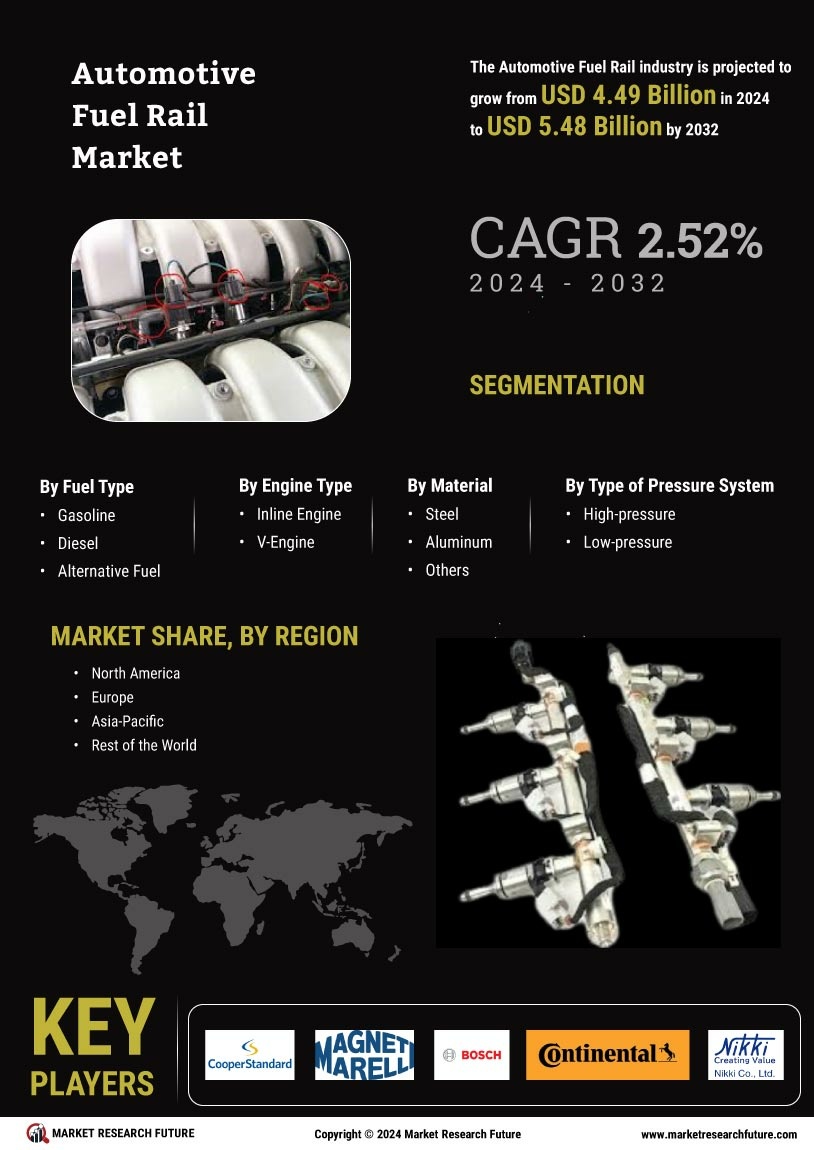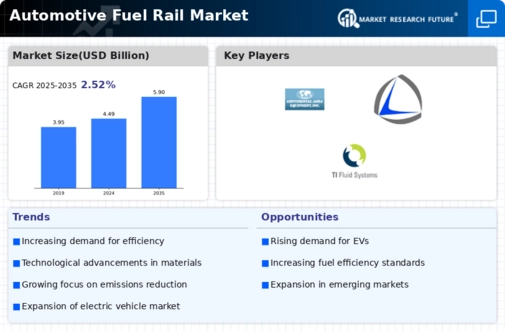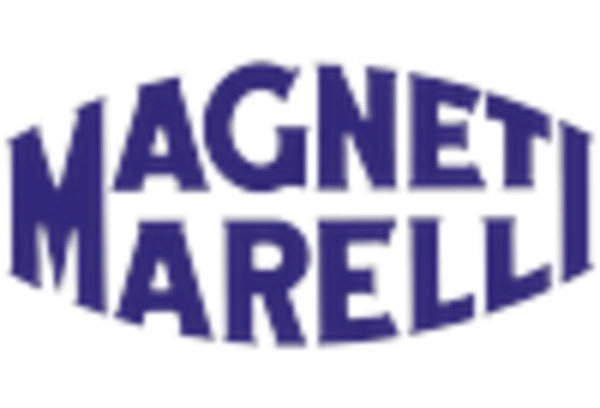Automotive Fuel Rail Market Summary
As per MRFR analysis, the Automotive Fuel Rail Market Size was estimated at 4.49 USD Billion in 2024. The Automotive Fuel Rail industry is projected to grow from 4.603 USD Billion in 2025 to 5.905 USD Billion by 2035, exhibiting a compound annual growth rate (CAGR) of 2.52 during the forecast period 2025 - 2035.
Key Market Trends & Highlights
The Automotive Fuel Rail Market is poised for growth driven by technological advancements and a shift towards alternative fuel systems.
- Technological advancements are enhancing the efficiency and performance of fuel rail systems across various vehicle types.
- North America remains the largest market for automotive fuel rails, while Asia-Pacific is emerging as the fastest-growing region.
- The gasoline segment continues to dominate the market, whereas the alternative fuel segment is witnessing rapid growth due to changing consumer preferences.
- Increasing demand for fuel efficiency and regulatory pressure for emission reductions are key drivers propelling market expansion.
Market Size & Forecast
| 2024 Market Size | 4.49 (USD Billion) |
| 2035 Market Size | 5.905 (USD Billion) |
| CAGR (2025 - 2035) | 2.52% |
Major Players
Bosch (DE), Denso (JP), Delphi Technologies (GB), Magneti Marelli (IT), Continental (DE), Aisin Seiki (JP), Hitachi Automotive Systems (JP), Standard Motor Products (US), TI Fluid Systems (GB)


















Leave a Comment